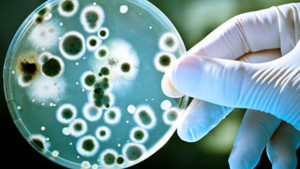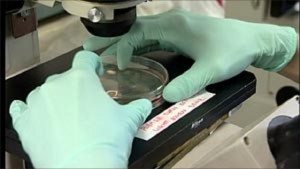Toxic Black Mold Health Problems
The mycotoxins that have actually most likely gotten the most attention by scientists are the trichothecenes, produced by Stachybotyrs chartarum and Aspergillus versicolor, 2 of the molds I want to go over due to their particularly poisonous impacts.

Stachybotrys Chartarum: The Dreadful ‘Black Mold’
Stachybotrys chartarum (SC) is a greenish black mold that grows on product with high cellulose material, such as wood, straw, hay, wicker, cardboard, fiberboard, and so on, especially when these products end up being water-damaged.
It requires a lot of moisture to thrive. According to Mold-Help. org, the poisonous impacts of Stachybotrys chartarum was initially reported in the 1920s in Russia when equines and cattle that had actually consumed moldy hay started passing away. The “Yellow Rain” attacks in Southeast Asia in the 1970s were related to aerosolized trichothecenes, the kind of mycotoxin produced by this extremely hazardous kind of mold. SC is normally dark in color and wet and slimy to the touch. It can likewise appear grayish or sooty, with a powdery look. Nevertheless, it is essential to bear in mind that molds can not be recognized aesthetically– lots of molds are comparable in look. Cladosporium, Aspergillus, Alternaria, and Drechslera, can be mistaken for Stachybotrys. The only conclusive method to recognize a types is by assessment of the spores under a microscopic lense, which is why expert screening is so crucial.
According to Mold-Help. org:
“The majority of people are not mindful that damaging molds been available in a range of colors– they can be white, or orange, or blue, for example. The color of a mold normally pertains to the spores it produces, and has no bearing on whether it is hazardous or not. There are some white molds that grow on walls and other surface areas that can be simply as bad as the dangerous black molds.” Mycotoxin poisoning by Stachybotrys is described as stachybotryotoxicosis. In animal researches, trichothecenes are 40 times more hazardous when breathed in than when consumed by mouth. However even if SC exists in your environment, you may not be at threat due to the fact that it might not be presently launching contaminants.
Once again, according to Mold-Help. org:
“Lab researches show that molds such as Stachybotrys that have the capability to produce contaminants do not constantly doing this. Whether a mold produces a contaminant while growing in a structure might depend upon exactly what the mold is growing on, conditions such as temperature level, food, pH, humidity or other unidentified aspects. When mycotoxins exist, they take place on spores and the little mold pieces that might be launched into the air.” The spores from SC can make it through temperature levels as much as 500 degrees F, along with making it through caustic representatives like bleach and acid. According to Dr. Michael Gray, spores from molds gotten rid of from 2 million year-old sedimentary rocks have grown when positioned in a beneficial media!
When these mycotoxins exist, they can reduce as well as ruin your body immune system, including your lymphoid tissue and bone marrow. Animals injected with SC contaminants experience hemorrhaging from their brains and other organs,including their thymus, spleen, lungs, gut, liver, and kidney. Human beings with persistent direct exposure to SC mycotoxins have actually reported the following illness:
- Cold and flu signs
- Respiratory issues, such as asthma and nose bleed
- Amnesia
- Muscle pains
- Aching throat
- Headaches
- Dermatitis and rashes
- Tiredness and generalized despair
- Hair loss
- Cancer
- Lung hemorrhage, emphysema

Could SIDS Be Triggered by Mold Toxicity?
The American Academy of Pediatrics (AAP) alerts that the hazardous impacts from mold, such as Stachybotrys, could trigger serious illness in babies, consisting of severe throwing up, looseness of the bowels, asthma attacks, as well as lung hemorrhaging in extreme cases. However it could be far even worse than that. Long-lasting direct exposure can cause death. According to a public health guide in 1994 in Cleveland, Ohio, 8 babies were consistently exposed to powerful mold contaminants. One baby passed away from lung hemorrhage. 5 of the 8 babies suffered repeating disease once they returned house from the medical facility, after treatment. According to the AAP12, some American baby deaths categorized as “SIDS” (Unexpected Baby Death Syndrome) might in fact be associated with mold direct exposure. According to Vicki Lankarge, author of Exactly what Every Property owner Have to Find out about Mold (And Exactly what to Do About It), there have actually been 45 reported cases of baby mold direct exposure given that the 1994 event in Ohio. And sixteen of these babies passed away. If your baby breathes in these mycotoxins, the capillary in his lungs are deteriorated. If this direct exposure goes on long enough, it can lead to serious lung hemorrhaging and death.13 Direct exposure to mold has actually likewise been connected to croup, pneumonia, and bronchitis in babies.
Aspergillosis: Mold That Can Settle in Your Lungs
Aspergilli are a few of the most usual ecological molds, often discovered in rotting plant matter, such as compost pile. Inside, it’s discovered in a/c and heating ducts, insulation, as well as on some food and spices. The majority of types of this typical mold are not hazardous, however a couple of can trigger significant disease when their spores are breathed in by individuals who have actually compromised immune systems, as holds true with asthma or an underlying lung condition. Or ,much healthier people can be at threat from long-lasting direct exposure to mold silently growing in water-damaged structures. Infections triggered by Aspergillus are called aspergillosis which is in fact a group of health problems varying from moderate to serious lung infections, or perhaps whole-body infections. The most severe kind of aspergillosis is intrusive:

Aspergillosis, which is when the mold attacks your capillary and the infect the rest of your body.
Aspergillus allergy can lead to fever, efficient cough, and worsening asthma.
With aspergillosis, you can really grow a “fungal sphere” in your lungs, a tangled ball of fungal fiber called aspergilloma. Aspergilloma can cause spitting up blood (hemoptysis), wheezing, shortness of breath, tiredness, and weight loss. According to the Mayo Center, if this kind of fungal infection ends up being really serious, it can infect your brain, heart, kidneys, or skin. You can likewise aquire pneumonia. Intrusive aspergillosis can trigger:
- Fever and chills
- Hemoptysis (spitting blood)
- Lung hemorrhage
- Shortness of breath
- Chest or joint discomfort
- Nosebleeds
- Facial swelling on one side
Direct exposure to one type of Aspergillus (A. niger) can harm your hearing. Serious Aspergillus infections are usually treated with aggressive intravenous antifungal medications, as well as surgical treatment.

